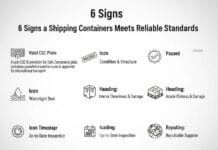
Today’s thought leaders live under a magnifying glass. One careless tweet, a critical Reddit thread, or an unflattering Google result can spiral into a reputation crisis overnight. The same algorithms that elevate your voice can just as quickly amplify the backlash.
It’s not just celebrities or billion-dollar founders feeling the heat. Coaches, creators, niche experts, and solo consultants—all rely on trust to sell books, land speaking gigs, or attract clients. And in an always-on digital world, trust is fragile.
Which is why modern gurus can’t leave their reputation to chance. They need a reputation firewall: proactive systems and strategies to monitor, manage, and protect how they’re perceived across every platform, every day.
This article breaks down why reputations are more vulnerable than ever—and how to build the defenses that keep yours intact.
Reputation in the Age of Virality
The internet is the world’s biggest megaphone—and occasionally its biggest guillotine. For modern gurus and influencers alike, every post, tweet, reel, or livestream is potential ammunition for a reputational wildfire. One poorly chosen phrase or an outdated joke can explode into viral outrage, leaving years of carefully curated credibility in ashes.
Unlike the pre-digital era, where a reputation crisis might smolder quietly in one corner of the press, today’s controversies ricochet across platforms at breakneck speed.
Reddit threads dissect every nuance, reaction videos rake in views, and search results immortalize the scandal.
And since the vast majority of users never venture beyond the first page of search results, anything that lands below that is essentially invisible, while whatever makes it on page one shapes public perception.
The stakes are sky-high: reputation damage doesn’t merely wound personal pride—it can tank brand partnerships, evaporate monetization opportunities, and shatter audience trust.
Influencers and gurus alike operate in a space where authenticity is prized, but so is relentless perfection. It’s a contradiction that keeps digital personalities teetering on a knife’s edge.
So, the question isn’t if public figures will face reputational challenges but when. And without proactive measures to monitor, protect, and repair their online presence, many find themselves unprepared when the internet decides it’s time for a public reckoning.
Core Components of a Reputation Firewall
Think of a reputation firewall as a multi-layered defense system. Each component covers a different angle of your public persona, from spotting gossip before it goes viral to deleting that “edgy” 2014 tweet you swore was hilarious. The sections that follow break down the practical moves every modern thought leader should have on speed dial. Skip a layer and, well… hope you enjoy surprise trending status for all the wrong reasons.
Monitoring and Alerts
For modern gurus and influencers, staying unaware of what’s being said online is a risky gamble. In the fast-paced digital landscape, conversations about your brand or personal identity happen around the clock, and missing them can mean missing the chance to correct misinformation, engage constructively, or prevent a small issue from becoming a bigger problem.
Monitoring tools like Google Alerts, Mention, and other social listening platforms help track mentions of names, brands, or specific topics across news sites, blogs, forums, and social media. This constant scanning makes it possible to spot both opportunities and potential risks early.
However, standard monitoring tools often fall short when it comes to handling the volume and speed of comments on platforms like Facebook and Instagram. For this reason, many influencers and businesses use specialized moderation tools such as CommentGuard, which focuses specifically on managing social media comments. Tools like these can automatically detect and hide spam, offensive language, or negative remarks, helping maintain a healthier and more brand-safe online environment.
Whether it’s catching emerging criticism on social media or filtering out spam under your latest post, active monitoring and real-time alerts are an essential layer in any reputation firewall. They ensure that influencers stay informed and can respond quickly, before conversations spiral out of control.
Tracking Engagement and Sentiment
A key pillar of any reputation firewall is knowing how your audience is interacting with your content and how they feel about it. That’s where tools like QR codes can become a surprisingly powerful tool for modern gurus and influencers.
When used strategically via digital business cards, event materials, or social media posts, QR codes unlock valuable insights into audience behavior. Each scan provides data about how many people engage with your content, when they’re engaging, and even where they’re located. This information helps identify which topics resonate most, which campaigns generate the highest interest, and where potential new audiences are emerging.
Beyond pure numbers, tracking QR code usage can function as an early-warning system for shifts in public sentiment. A sudden spike in scans might indicate viral interest or the beginnings of a controversy. Paired with monitoring tools and social listening platforms, QR code analytics can help influencers quickly spot unusual patterns and investigate what’s driving the attention.
Naturally, not all QR code tools are created equal. Some are sleek and powerful; others are basically pixelated clip art. So do yourself a favor and research wisely. A quick search for best digital business card & Medium (or any trusted third-party source) will surface top-rated platforms that don’t just look good but also handle dynamic QR codes, real-time analytics, and fast-loading media. Translation: fewer headaches for you and one more piece of your reputation firewall locked firmly in place.
Search Result Management
For modern gurus and influencers, managing those search results is a crucial part of any reputation firewall, because one viral headline—or even an old article pulled out of context—can keep resurfacing and shape public perception for years.
Managing search results isn’t about erasing reality but about making sure your digital presence reflects who you are now, not the person you were during, say, your regrettable 2017 YouTube rant. The solution lies in creating fresh, high-quality content and building authoritative links that push the right pages higher in search rankings.
For busy influencers juggling everything from live streams to book deals, it often makes sense to outsource backlink building rather than trying to run a full SEO operation solo. But it’s crucial to choose partners who actually understand your industry. For gurus in areas like SaaS or B2B, for instance, a specialist agency like Growth Partners Media focuses on link building tailored to those industries, helping brands secure relevant mentions and links that support both search visibility and long-term authority.
Meanwhile, influencers in B2C spaces or e-commerce might look at agencies that specialize in consumer-focused link building, working with lifestyle publications, shopping blogs, or high-traffic review sites. Whether you’re selling enterprise software or vegan sneakers, the key is choosing partners who understand your industry’s audience and media landscape.
Ultimately, in the digital world, perception is reality. And if you don’t take control of your search results, the internet’s memory will happily define your brand for you, usually in the least flattering way possible.
Content Auditing
The internet has a long memory—and unfortunately, it never forgets that edgy meme you posted in 2014. A reputation firewall isn’t just about blocking new fires; it’s about checking whether you’ve left any lit matches lying around. That’s where content auditing comes in.
Start with a strict inventory of everything you’ve published: tweets, blog posts, podcast episodes, livestreams, conference slides. Map it all in a spreadsheet and tag each item by platform, date, topic, and risk level. Anything that feels cringeworthy, off-brand, or wildly out of step with your current values goes straight into the “review” column.
Once the inventory exists, tackle three core questions:
- Does it still align? Opinions evolve. If a post contradicts your present-day stance, either update it with context or archive it before someone weaponizes the contradiction.
- Is it factually correct? Stats expire, links rot, and outdated references make you look sloppy. Refresh or remove anything that’s no longer accurate.
- Could it be misinterpreted? Sarcasm is risky currency online. If an old joke can be read badly out of context, decide whether a rewrite, a disclaimer, or quiet deletion is the wiser choice.
A few specialized helpers can speed things up. Social-media bulk-deleters let you filter ancient posts by keyword or date range, while content-audit plug-ins from platforms like Semrush highlight pages with high traffic but questionable timeliness. For email newsletters and gated PDFs, consider running everything through a document search tool to catch forgotten references before they resurface.
Schedule audits twice a year—quarterly if you’re scandal-prone—and keep a changelog so the team knows what went where and why.
The payoff? Fewer skeletons rattling in search results, tighter brand coherence, and one less bonfire for internet sleuths to ignite.
Remember, sometimes preventing tomorrow’s PR crisis often means cleaning up yesterday’s “just kidding” moment today.
Crisis Protocols
Even a fortress-grade reputation firewall can’t prevent every flare-up. The real measure of a modern guru is how fast and coherently the team reacts when Twitter decides it’s roast-o’clock. That reaction hinges on tight internal coordination—drafts need to pass legal, tone must stay consistent across channels, and every statement has to land before rumors set in concrete.
Project-management workhorses like Asana or Trello help keep the moving parts aligned: tasks get assigned, deadlines stay visible, and no approval step goes missing in the scramble. For teams that juggle bigger workflows—content rewrites, stakeholder reviews, post-incident retros—platforms such as Notion provide a centralized board where everyone can see exactly where a crisis response sits in the pipeline.
But when the temperature spikes and nuance matters, typing in comment threads only slows things down. That’s when jumping into a live room on a video collaboration platform like Beekast becomes invaluable. Instead of thirty back-and-forth messages, teams hash out wording in real time, screen-share the draft, and sign off within minutes.
Crisis protocols aren’t about spin—they’re about speed, clarity, and trust. Because in the digital age, how you handle the storm often matters more than the storm itself.
Common Mistakes That Can Burn Your Reputation Firewall
The reality is, no firewall is perfect. But knowing where most influencers slip up helps you avoid repeating the same mistakes. The best reputation strategy is proactive, flexible, and humble enough to admit when it’s time to clean house or just keep quiet.
Let’s unpack some of the most common mistakes that derail even well-intentioned reputation strategies and how to sidestep them before you end up as tomorrow’s cautionary tale.
Ignoring Small Fires Until They’re Wildfires
Plenty of influencers spot a critical comment, a negative review, or a spicy Reddit thread and think, “Eh, it’ll blow over.” Spoiler: it often doesn’t. Silence can look like guilt or indifference, and digital rumors grow legs fast. Address issues early—even if it’s just a short acknowledgment—so you’re steering the conversation instead of chasing it.
One-Size-Fits-All Reputation Tools
Not all reputation management tools are built for your niche. A guru in B2B SaaS has vastly different audiences and risks than a lifestyle influencer. Using generic tools or working with agencies who don’t understand your field can lead to wasted time and missed signals. Tailor your tech and partners to your specific digital ecosystem.
Treating a Firewall Like a “Set It and Forget It” Project
A reputation firewall isn’t a one-time install—it’s ongoing maintenance. Digital landscapes shift fast, algorithms change, old content resurfaces, new platforms appear out of nowhere. If you’re not auditing your reputation regularly, you’re leaving gaps that can be exploited.
Overreacting in Public
A knee-jerk meltdown on Twitter rarely ends well. Yes, it’s tempting to clap back at critics or “set the record straight” in real time, but poorly timed emotional responses often fan the flames instead of putting them out. When in doubt, step back, breathe, and consult your crisis protocols before firing off that next tweet.
Forgetting Internal Alignment
Nothing kills credibility faster than conflicting messages from different corners of your team. The guru posts one statement on Instagram, while the PR team emails journalists something completely different. Make sure everyone who speaks for you knows the story, the facts, and the tone.
Conclusion: Guarding Your Digital Throne
Being a modern guru sounds glamorous until you realize you’re basically living on a digital stage where the spotlight never shuts off.
A reputation firewall isn’t just fancy jargon—it’s the difference between thriving as a trusted voice and scrambling to clean up digital disasters. From monitoring mentions and tracking engagement, to managing search results, auditing old content, and preparing for crises, each piece plays a role in keeping your brand strong and your sanity intact.
Mistakes will happen. Posts will age badly. Someone, somewhere, will always have an opinion. But with proactive strategies in place, you can handle the storms with clarity and maybe even come out stronger on the other side.
So keep creating. Keep sharing your wisdom. But don’t forget: the internet never sleeps, and neither should your reputation firewall.





